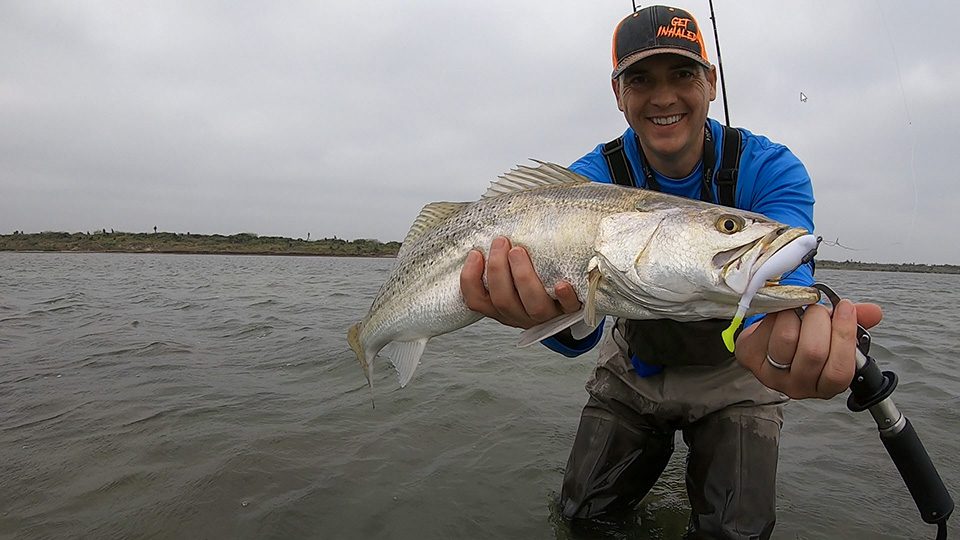By Capt. Michael Okruhlik
“Work a lure several different ways before ruling it out.”
Have you ever wondered why your buddy fishing next to you is catching more fish while you are both using the same lure? Chances are it has to do with the way he’s retrieving his lure that entices fish to strike.
What is the first thing you do when the fish are not biting? Most people immediately change lures. If that doesn’t work, the next step is usually to move locations, only to work the lure the same way when it clearly was not producing. You must try working a lure several different ways before ruling it out as ineffective.
Here is an example. One chilly morning I was throwing a Controlled Descent Jerk Shad set to sink very slowly. It had a rattle in it. Since the water was in the mid 50s, I concentrated on an area that was 3 or 4 feet deep with a soft silty bottom. I started out keeping my lure near the bottom and working my rod parallel to the water. The lure was basically suspending 6- to 18-inches off the bottom with a side-to-side motion. This is a proven technique in similar situations; however, I didn’t get a strike.
After some time covering the area with that technique, I changed my retrieve and worked the same area with the same lure. I started to twitch my lure slowly to the surface, almost as if it was climbing stairs, but very slowly. Since this lure had an extremely slow sink rate, it would almost suspend when paused after “climbing a few steps.” Once the lure reached the surface, I would let it slowly sink back to the bottom and repeat. I started to catch solid trout up to 6 pounds when the lure would almost reach the surface.
My strategy paid off in the end.
Later that day, I fished a different spot with similar conditions. I was working the lure the same way that had produced earlier, and I was getting some very light bites once the lure would reach the bottom. The fish would pick up the lure and swim off, or at times they would swim toward me and I never really felt the strike. I landed a couple but missed and lost many more.
Since they were definitely on the bottom and not really aggressive toward the slow-moving lure, I changed it up. Since I had a rattle, I started vigorously shaking my rod tip to make the lure rattle and twitch on the bottom without a lot of forward motion. This was most likely stirring up some silt, as well. This erratic action enticed the trout into a more instinctive strike. I began getting very aggressive strikes and landed every fish that hit.
I never changed lure color, style or weight all day. Had I simply switched lures like most people do and worked them the same way as I started, I might not have caught anything. Try changing your retrieve before tying another knot.
Capt. Michael Okruhlik is the inventor of Controlled Descent Lures and the owner of www.MyCoastOutdoors.com.
